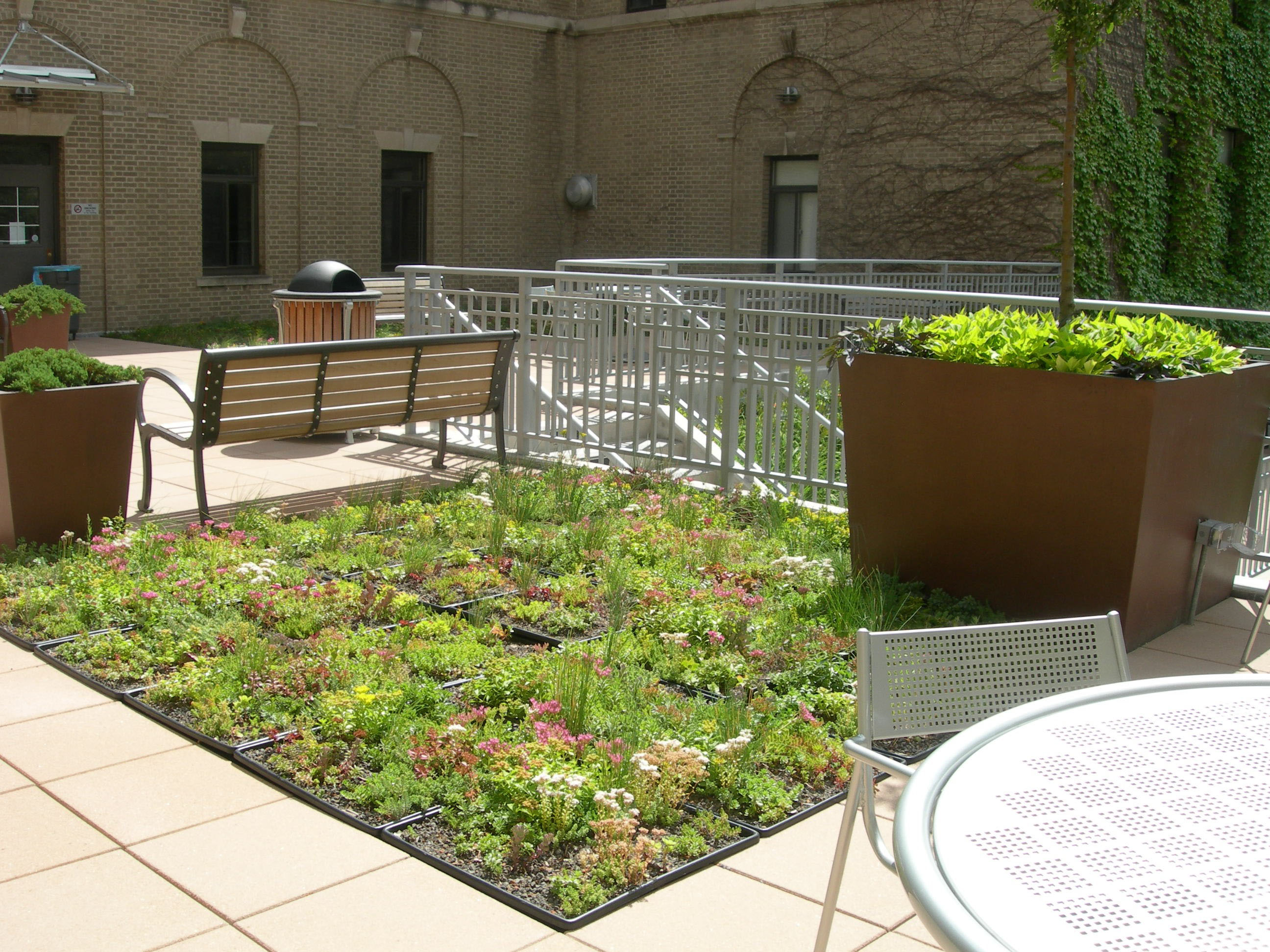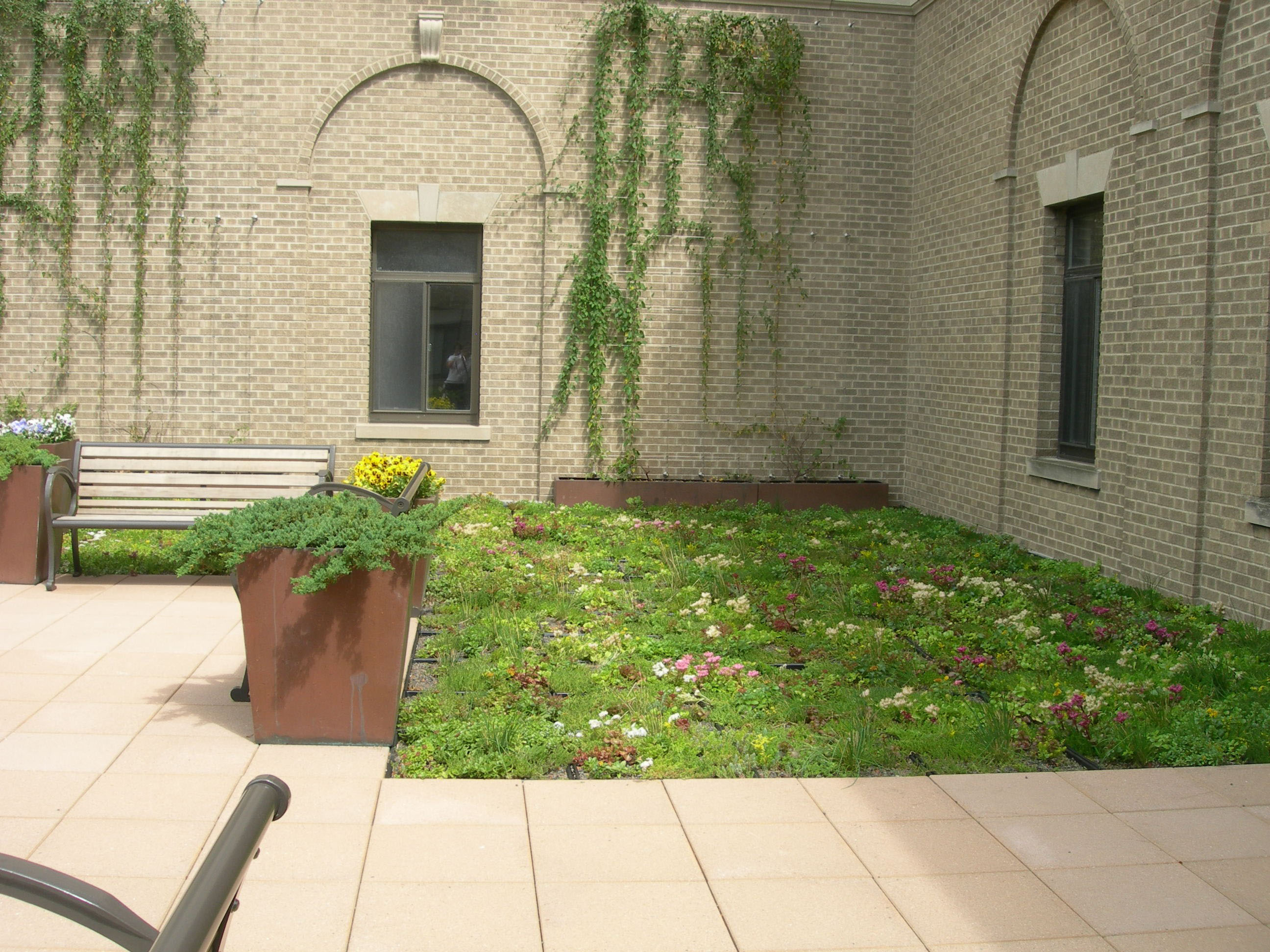![]()
Mann Library Green Roof
Sustainable Landscapes Trail at Cornell University
The Mann Library Green Roof was designed and constructed to convert a roof into a human-occupiable landscape that also provides ecosystem services. This was an effective way to add social space on campus where space is limited. It is a beautiful addition to the built environment around Mann Library, and to the collection of gardens throughout Cornell's Ag Quad (including the Dean's and Centennial Gardens behind Warren Hall and Minns Garden in front of Plant Science).
Return to Sustainable Landscape Trail Sites Homepage
Why is this site sustainable?
Known as a “green roof,” this garden features modular trays filled with growing medium that can support selected plant life and easily be removed for roof maintenance or tray replacement.
- This green roof's sustainability features include:
- A permeable layer of soil and vegetation that stores water and reduces run- off during storms.
- An aesthetic environment that promotes human well-being.
- A gathering space for recreation, study and teaching.
- According to the standards set forth by the Sustainable SITES Initiative® this garden qualifies for credits in the following categories:
- Human health and well being
- Mental restoration
- Social connection
- Site Design
- Reduces water use for landscape irrigation
- Manages precipitation on site
- Includes functional stormwater features as amenities
Green Roof Construction & Function
The majority of this extensive green roof utilizes shallow modular trays that can easily be removed and are filled with a coarse growing medium. The medium in these containers is composed of sand, composted bark and stalite (a lightweight expanded slate aggregate), which provides rapid drainage and an environment for plants to grow. The plants that were selected for use on the roof garden are primarily Sedum spp. and Allium sp.bulbs for spring interest. These plants were selected for their small stature, ability to grow well in low soil volumes and capacity to withstand periods of prolonged wet and dry.
Sections of the roof feature “intensive” areas where a greater volume of soil has been used to support larger plantings such as small trees and shrubs and provide overflow drainage. Large containers have been used to grow trees and provide a greater diversity of landscape plantings and aesthetics. The large pots contain Japanese Garden Juniper (Juniperus procumbens), Korean Pine (Pinus koraiensis), and the Adirondack Crabapple (Malus‘Adirondack’).


